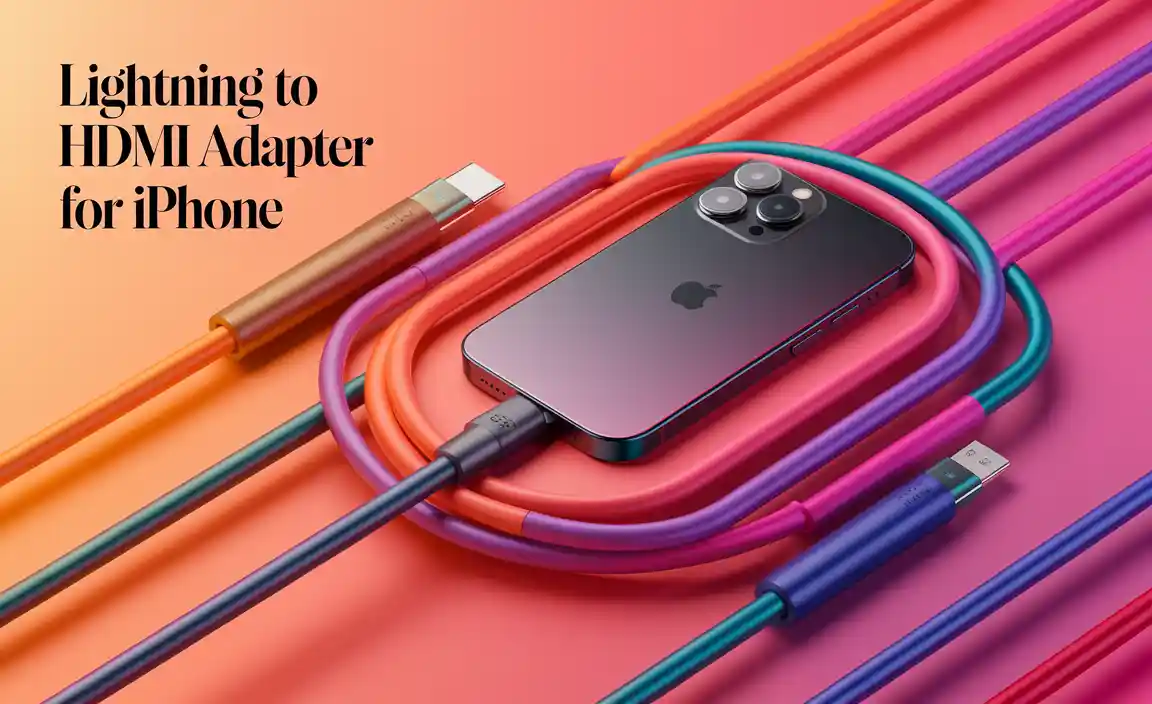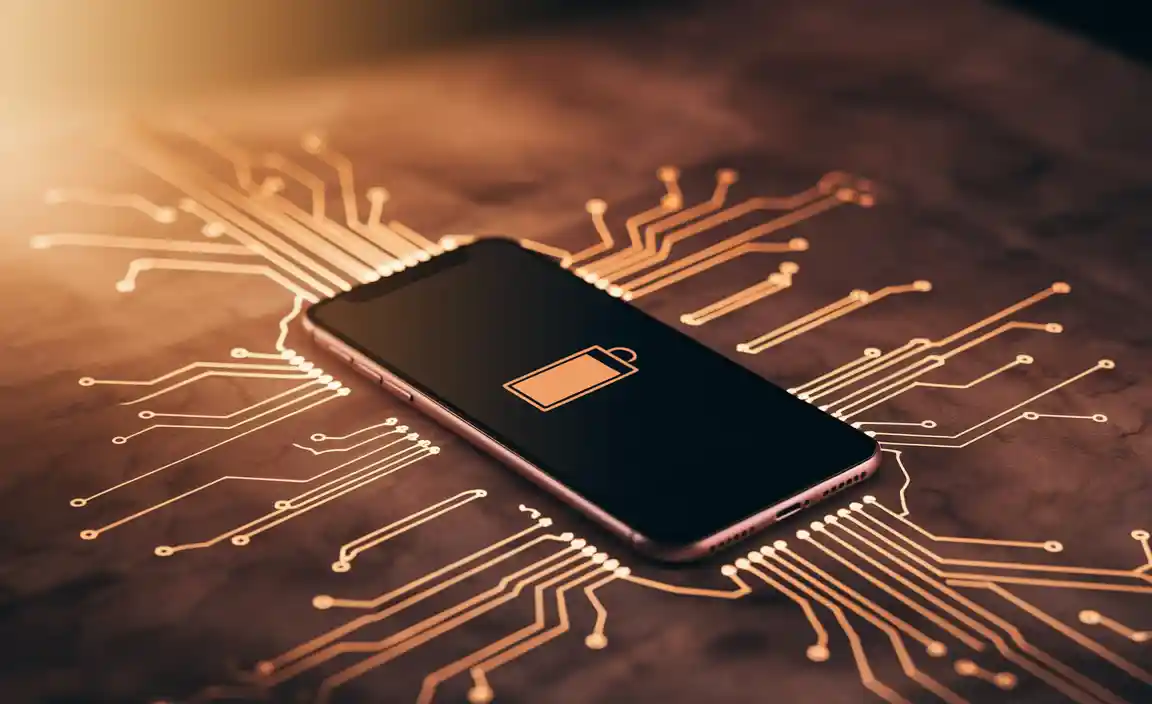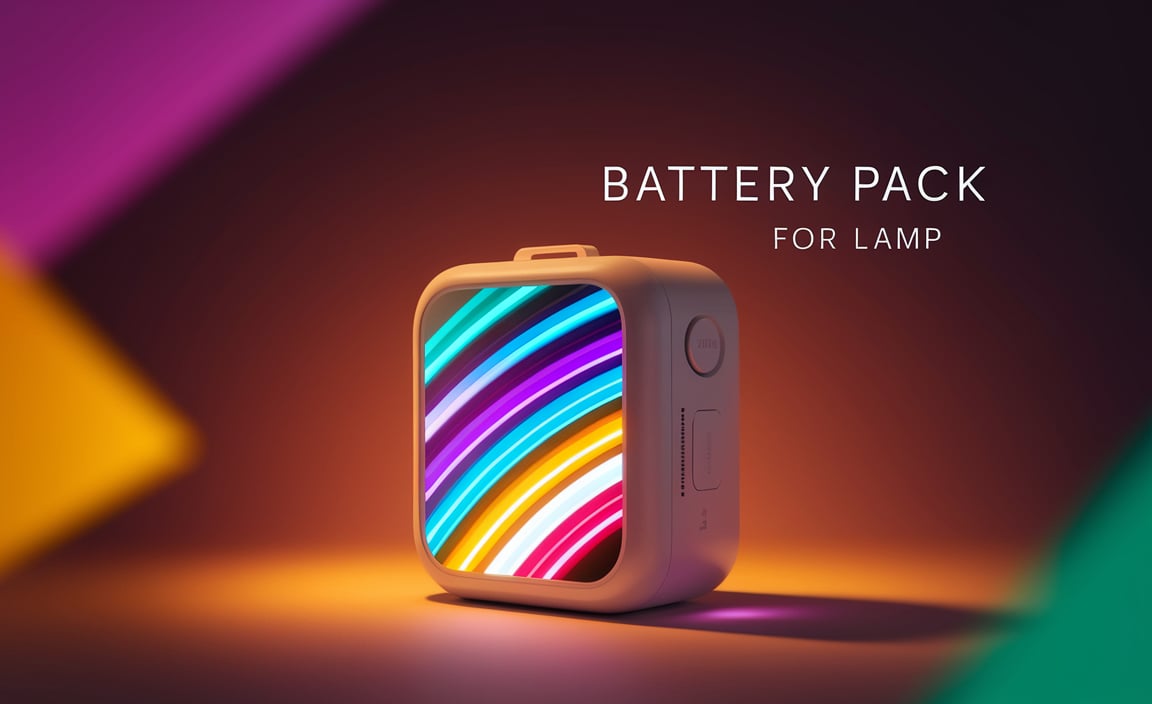Quick Summary: Discover how a 12V car battery differs from fast charging tech used for phones. While a car battery provides raw power to start your engine, fast charging rapidly replenishes small batteries in devices like phones, using different voltages and speeds. This guide clarifies their roles for everyday power needs.
Ever wondered why your phone charges so quickly while your car battery seems to just… sit there until it’s time to start the engine? It might seem strange, but these two power sources, though both crucial, work in fundamentally different ways. One is about raw booting power, the other is about speedy energy top-ups. It can be confusing, especially when we hear terms like “fast charging” thrown around. But don’t worry! Let’s break down what a 12V car battery is compared to the fast charging technology we use for our gadgets. We’ll make it super simple so you know exactly what’s happening with your power. Stick around, and you’ll be a power pro in no time, understanding how both keep your world running.
Understanding Your Car’s 12V Battery: The Heart of Your Vehicle
Think of your car’s 12V battery as the muscle that wakes up your car. When you turn the key or push the start button, it delivers a massive jolt of electrical energy. This energy powers the starter motor, which then cranks the engine to life. Once the engine is running, the alternator takes over. The alternator is like your car’s personal power generator; it keeps the electrical systems running and recharges the battery.
A car battery is designed for a very specific, high-demand task: delivering a high current for a short burst to start the car. It’s not really meant to be constantly recharged and discharged like a phone battery. Its main job is to hold a large amount of energy and be ready to unleash it in an instant. These batteries are built tough, usually with lead-acid components, to withstand the vibrations and temperature changes a car experiences.
Key Features of a 12V Car Battery:
- Voltage: Nominally 12 volts, though it can read higher when fully charged.
- Capacity: Measured in Ampere-hours (Ah), indicating how much energy it can store.
- Cold Cranking Amps (CCA): A crucial rating for starting power, especially in cold weather.
- Lifespan: Typically 3-5 years, depending on usage and climate.
- Purpose: Primarily to start the engine; also powers electronics when the engine is off.
Fast Charging Your Devices: Speeding Up Replenishment
Now, let’s talk about your phone, tablet, or laptop. You know that satisfying feeling when your battery icon jumps from 20% to 60% in just 30 minutes? That’s fast charging in action. Unlike your car battery, which needs to fire up an entire engine, your phone battery needs a steady, controlled flow of energy to recharge its smaller internal battery cells.
Fast charging technologies are smart. They communicate with your device to figure out the safest and quickest way to deliver power. They can increase the voltage or amperage (or both) sent from the charger to your device, speeding up the charging process significantly compared to older, standard chargers. Think of it like filling a small water bottle versus a large swimming pool. Fast charging is designed to fill that small bottle as quickly as possible without causing any damage.
How Fast Charging Works (Simply Put):
- Higher Wattage: Fast chargers deliver more power (Watts = Volts x Amps).
- Smart Communication: The charger and device “talk” to agree on the best charging speed.
- Varied Standards: Different brands use different technologies (e.g., Qualcomm Quick Charge, USB Power Delivery).
- Purpose: To get your portable devices from low battery to usable levels much faster.
- Battery Health: Modern fast charging is designed to protect your battery from overheating or damage.
Comparing Apples and Oranges: 12V Car Battery vs. Fast Charging
It’s easy to get these two power concepts mixed up, but they are designed for very different jobs. Here’s a table to highlight those differences:
| Feature | 12V Car Battery | Fast Charging (for devices) |
|---|---|---|
| Primary Function | Starting the car engine (high, short burst of power) | Recharging portable device batteries (quick, sustained energy transfer) |
| Voltage Output | ~12.6V (fully charged), delivers high CCA for cranking | Varies; often starts at 5V, increases to 9V, 12V, 15V, or even 20V during fast charging. |
| Current (Amperage) | Thousands of amps needed for starting; lower for accessories. | Typically 1A to 5A or more, depending on the fast charging standard. |
| Energy Storage Capacity | High (measured in Ampere-hours, e.g., 50-100 Ah) | Low (device battery typically 3,000-5,000 mAh, which is 3-5 Ah) |
| Charging Source | Car’s alternator (while engine is running) or a dedicated battery charger. | Wall adapter, computer USB, power bank. |
| Technology | Lead-acid (common), Lithium-ion (emerging) | Lithium-ion (in devices), various charging protocols (USB PD, QC, SCP, etc.) |
| Speed Focus | Delivering massive power instantly for starting. | Delivering energy quickly to recharge battery capacity. |
The core difference boils down to purpose and power delivery. A car battery is built for extreme, short bursts of power to overcome inertia and get a complex engine running. Fast charging is about efficiently topping up the chemical energy stored in the smaller batteries of our electronics, often under carefully controlled conditions.
The “Why” Behind the Difference: Physics and Engineering
Why can’t we just use a car battery to fast charge our phones, or vice-versa? It all comes down to physics and how energy is managed.
Car Batteries: Raw, Unfiltered Power (When Needed)
A car’s starting system is demanding. The starter motor draws an enormous amount of current – often hundreds of amps – for a few seconds. This is why car batteries are designed with large plates and a high capacity for electrochemical reactions. They essentially store a lot of energy and can discharge it very quickly. However, this high discharge rate means they can be damaged if asked to do things they aren’t designed for, like constantly delivering low, steady power for an extended period.
To understand the sheer power difference, consider this: a typical smartphone battery might be 4,000 mAh (milliampere-hours). If we convert this to adenine-hours (Ah), it’s 4 Ah. A car battery is usually around 50-100 Ah. So, even though the car battery is much larger, the way it delivers power is different. The CCA rating on a car battery shows its ability to deliver high current in cold conditions, something essential for starting an engine but not relevant for charging a phone.
Fast Charging Technology: Smarter, Controlled Energy Transfer
Fast charging for devices is sophisticated. It uses protocols that allow the charger and the device to negotiate the optimal charging parameters. These protocols, like USB Power Delivery (USB-IF), are designed to:
- Safely Increase Voltage: Instead of a standard 5V, fast charging can ramp up to 9V, 12V, 15V, or even 20V. Higher voltage means power can be delivered faster without needing excessively high currents, which can generate a lot of heat.
- Manage Heat: Heat is the enemy of battery longevity. Fast charging systems monitor temperature and adjust charging speed to prevent the battery from overheating.
- Optimize for Battery Life: While fast charging is convenient, charging batteries too aggressively can reduce their overall lifespan. Modern fast charging tries to balance speed with battery health, often slowing down as the battery gets closer to full.
Trying to connect a car battery directly to a phone would be disastrous. The voltage is wrong, and there’s no control over the massive current that could flow, instantly frying the phone’s delicate electronics and battery. Conversely, trying to start a car with a phone charger is just impossible; it simply can’t deliver the sheer power needed.
When in Doubt, Check the Specs: Battery Maintenance and Charging
Understanding these differences helps us take better care of our power sources. For your car battery, this means regular checks and knowing when it’s time for a replacement. For your phone or other devices, it means using the right charger and cable.
Tips for Your Car Battery:
- Clean Terminals: Corrosion on the battery terminals can prevent proper charging and power delivery. Clean them with a wire brush.
- Secure Connections: Ensure the cables are tightly connected to the battery posts.
- Listen for Warning Signs: A clicking sound when you try to start, dim headlights, or slow engine cranking can all indicate a weak battery.
- Test It Regularly: Auto parts stores often offer free battery testing. This can give you a heads-up before it dies completely.
- Consider Replacement: If your battery is several years old or showing signs of failure, it’s wise to replace it before you get stranded. You can find guides on replacing a car battery from reputable sources like AutoZone.
Tips for Your Device Chargers and Batteries:
- Use the Right Charger: Whenever possible, use the charger that came with your device or a reputable replacement that matches its specifications.
- Opt for Certified Cables: Cheap, uncertified cables can be unreliable and may not support fast charging or even charge your device correctly.
- Don’t Always Fast Charge: While convenient, always fast-charging can slightly reduce battery lifespan over time. If you’re charging overnight, a slower charger might be gentler on your phone’s battery.
- Monitor Heat: If your device or charger gets excessively hot during charging, unplug it and let it cool down.
- Protect Your Phone’s Battery: Avoid letting your phone battery drop to critically low levels (below 10-20%) too often, and try not to charge it all the way to 100% if you don’t need to, as this can put stress on the battery.
Beyond the Basics: Power Banks and Adapters
The world of portable power extends further, and understanding how things like power banks and adapters fit in can be helpful.
Power Banks: Your Portable Energy Reserve
A power bank is essentially a portable battery for your portable devices. They come in various capacities, measured in mAh, just like your phone. A good power bank will also support fast charging protocols, allowing you to charge your phone quickly when you’re nowhere near a wall outlet. When you recharge the power bank itself, you’ll want to use a fast charger to top it up efficiently.
When choosing a power bank, look at its output (how fast it can charge your device) and its input (how fast it can be recharged). A 10,000 mAh power bank might have a 18W or 30W output, meaning it can provide fast charging to compatible devices. It will also have an input rating, perhaps 12W or 18W, indicating how quickly the power bank itself can be refilled.
Adapters: The Middlemen of Power
Adapters, especially USB wall adapters, are crucial. They convert the high voltage from your wall outlet into the specific voltage and current your device needs. A standard USB adapter might output 5V at 1A (5 Watts), while a fast-charging adapter can switch its output to higher voltages and amperages (e.g., 9V at 2A for 18W).
The adapter is the brains behind the operation for fast charging. It needs to be able to safely deliver those higher power levels. Using a low-quality adapter can not only charge your device slowly but also potentially cause damage or be a safety hazard. Always ensure your adapter is from a reputable brand and supports the fast-charging standards your devices use.
FAQs: Your Quick Power Questions Answered
Q1: Can I use my phone’s fast charger to charge my car battery?
A1: No, absolutely not. Your phone’s fast charger operates at much lower voltages and amperages than what’s needed to even begin charging a car battery. Attempting this would be completely ineffective and could damage your charger and potentially your car’s electronics if you tried to rig something up.
Q2: Will fast charging damage my car battery?
A2: You cannot connect your phone’s fast charger to your car battery, so there’s no risk of it being damaged by fast charging technology. Car batteries are charged by the car’s alternator or a specialized battery charger, which are designed for their specific high-power needs.
Q3: How long does a 12V car battery typically last?
A3: A typical 12V car battery lasts between 3 to 5 years. This can vary based on climate (extreme heat or cold can shorten lifespan), driving habits (frequent short trips are harder on batteries), and maintenance.
Q4: Why is my phone charging slower than usual, even with a fast charger?
A4: Several things can cause slow charging: the charger or cable might be damaged or low quality, the device’s charging port might be dirty, the device’s battery health might have degraded, or the device’s internal temperature might be too high (thermal throttling). For safety, devices slow down charging when they get too hot.
Q5: What does “CCA” mean on a car battery?
A5: CCA stands for Cold Cranking Amps. It’s a rating that tells you how much current a battery can deliver for 30 seconds at 0°F (-18°C) while maintaining at least 7.2 volts. It’s a crucial number for starting your car, especially in cold weather.
Q6: Are all “fast chargers” the same?
A6: No, there are many different fast charging standards (like USB Power Delivery, Qualcomm Quick Charge, Samsung Adaptive Fast Charging, etc.). For true fast charging, your charger, cable, and device all need to support the same standard.
Q7: Can I use a power bank to jump-start my car?
A7: Most standard power banks cannot jump-start a car. Jump starters are specialized devices designed to deliver a massive surge of power, far beyond what a typical phone power bank can provide. Always check the specifications of a power bank; some might have jump-start capabilities, but they are distinct from regular power banks.
Conclusion: Powering Your World, Differently
So, there you have it! Your 12V car battery is a powerful workhorse designed for the demanding task of awakening your vehicle, delivering a massive jolt to get things moving. It’s built for short bursts of high energy. On the other hand, fast charging technology is a smart, modern solution for our ubiquitous portable devices. It focuses on safely and efficiently replenishing the energy in smaller batteries, allowing you to stay connected without long waits.
Understanding these fundamental differences isn’t just about satisfying curiosity; it’s about making informed decisions. It means using the right charger for your phone, knowing when your car battery might need attention, and choosing power solutions that fit your needs. Whether you’re a seasoned driver or just learning the ropes of portable tech, mastering these basic power concepts will help you keep everything running smoothly and reliably. So next time you start your car or plug in your phone, you’ll know exactly how that magic is happening.




